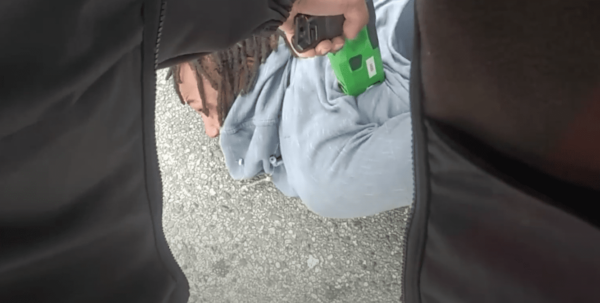 View Winners →
View Winners → Enlarged heart, cocaine factors in death of man tased by LA police

A Washington, D.C. teacher who was shot with a stun gun multiple times by Los Angeles police following a traffic collision in Venice Jan. 3 died from the effects of an enlarged heart and cocaine use, according to the Los Angeles County Medical Examiner.
The results came from a Jan. 11 autopsy on 31-year-old Keenan Anderson and additional tests that were certified Thursday.
“Mr. Anderson was observed making erratic statements and appeared agitated,” the report said. “He soon fled on foot and was restrained by multiple officers who reportedly used wrist locks and hobbling techniques, and a CED (stun gun). External analysis of the discharged CED revealed probes were deployed without skin impact and that trigger activations were discharged to Mr. Anderson’s back.”
Anderson, a cousin of Black Lives Matter co-founder Patrisse Cullors, was in the Los Angeles area visiting relatives during the Christmas season when he was involved in a traffic collision at Lincoln and Venice boulevards and reportedly tried to run away.
In January, Los Angeles Police Chief Michel Moore said a full investigation would be conducted with a special focus on the repeated use of the stun gun, or Taser.
“In my preliminary review of this incident, it’s unclear what the role of that Taser was,” Moore said. “To be clear, it’s dependent on the totality of our investigative resources, but also on medical records from the hospital as well as a coroner’s report and their formal and forensic level examination. As this investigation continues, however, I will pay close attention to the use of the Taser.”
Late Friday, Los Angeles Mayor Karen Bass again mourned Anderson’s death, noting that he was the father of a 5-year-old son and had been a teacher for more than eight years, most recently at the Digital Pioneers Academy, a charter school in Washington, D.C.
“Keenan Anderson was a father, a son, a brother, a cousin, and an educator of young people,” Bass said in a statement. “He was loved and he is missed. My thoughts are with his friends and family as I know the release of this report will cause them and many Angelenos great pain as they still mourn this loss. I remain committed to expanding the public safety system to include health professionals and to ensuring LAPD officers receive the best possible training to assist people in crisis.
“The coroner raises questions that still must be answered and I await the result of the investigation already underway. I know that in this time of pain it sometimes feels like there is no hope, but we must turn the pain into concrete, substantive change — and we will.”
Anderson’s family filed a $50 million damages claim against the city shortly after his death. The claim is a precursor to a lawsuit.
“If you tase someone with 50,000 watts of electrical energy six times in the heart, is there really any wonder that moments later his heart would begin to flutter?” attorney Carl Douglas, who is representing Anderson’s family, said at a news conference after the claim was filed. “Is there really any wonder that moments later his heart would begin to beat erratically? And is there any wonder why four hours later his heart could no longer withstand the pressure from that Taser and gave out?”
Moore and the LAPD released edited body-camera footage showing the encounter between Anderson and the police officers.
Soon afterward, the Los Angeles Police Protective League, the union that represents LAPD officers, issued a statement insisting Anderson escalated the confrontation with his behavior, which included running away from officers into traffic. The League also asked that an unedited version of the tape be released.
“Minor auto accidents are usually handled with an exchange of information between the drivers and a call to one’s insurance carrier,” the League said. “On the other hand, when an individual who is high on cocaine is in an accident, tries to open the car door of an innocent driver, and then flees the scene by running into traffic, police officers must act.”










































































































